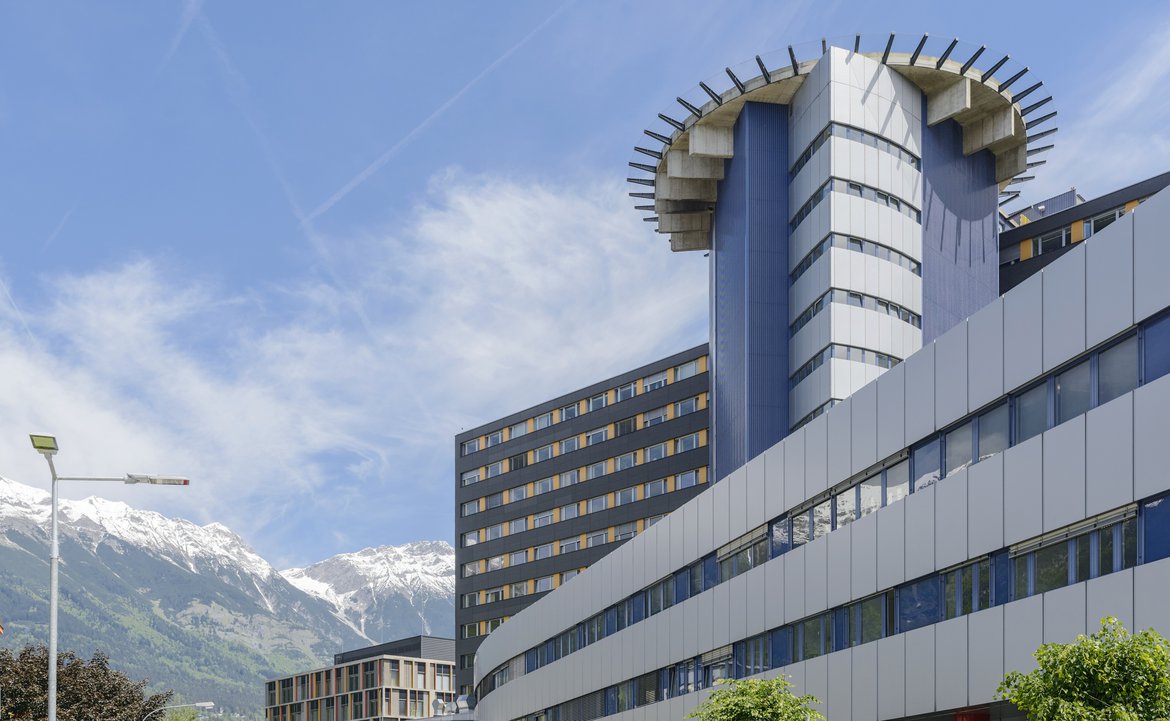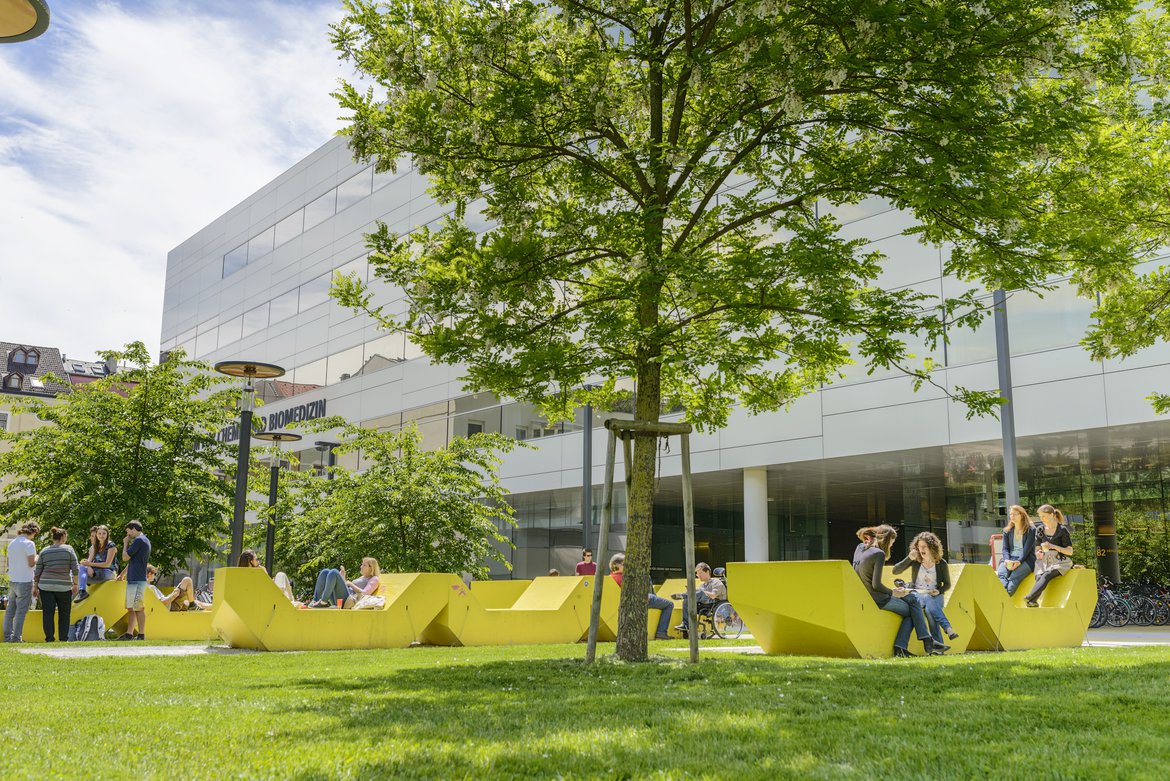Neurobiology for non-specialists: Studying the brain
3rd HBP Curriculum Workshop Series - Neurobiology for non-specialists
1-3 July 2019 | Medical University Innsbruck, Austria
Click on the button below to access the workshop's media section.
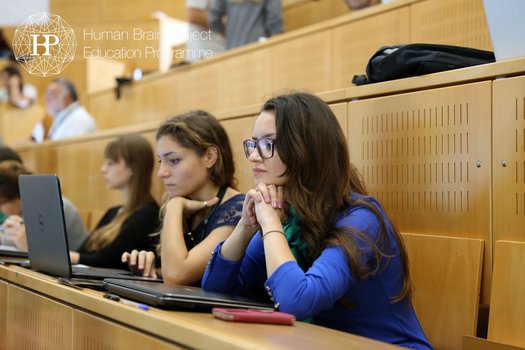
FAQs & ALL YOU NEED TO KNOW
You have to expect the following expenses:
- Registration fee (€ 250.00)
- Travel
- Accommodation
- Breakfast & dinner
What we cover:
- Lunch & coffee breaks
- Up to 5 fee waivers
Find further information on the application process and support opportunities on the .
Innsbruck is the state capital of Tyrol, Austria and also called the capital of the Alps, where you can enjoy a unique mix of alpine urban experiences. A great range of leisure activities, cultural highlights and sports are offered year round in Innsbruck.
Innsbruck can be reached by plane (INN) from several major European hubs or by train. For information about train connections, please check Austrian Railways.
The campus can be easily reached by bus and tram:
- Bus line R – stop "Klinik/Universität"
- Bus line C – stop "Chirurgie/Studentenhaus"
- Bus line M – stop "Chirurgie/Studentenhaus"
- Tram line 3 – stop "Klinik/Universität"
- Tram line 2 – stop "Klinik/Universität"
- Tram line 5 – stop "Klinik/Universität"
We strongly recommend that you invest in travel insurance and inform yourself about treatment and reimbursement conditions before travelling to Innsbruck, Austria. If you are a European citizen, you should bring your European Health Insurance Card, which is accepted in combination with an ID.
As health care and social security systems vary between EU countries, please check the details on unforeseen medical treatment abroad.
Please note that you might have to contact your health insurer for authorisation before being treated at the hospital.
Innsbruck has continental climate. Summer is highly variable and unpredictable. Days can be cool, with temperatures as low as 17 °C (63 °F) and rainy, or sunny and extremely hot, sometimes hitting 34 °C (93 °F). In summer, as expected for an alpine-influenced climate, the diurnal temperature variation is often very high, as nights usually remain cool, at 12 °C (54 °F) on average, sometimes dipping as low as 6 °C (43 °F).
EDUROAM is available at Medical University Innsbruck.
- Language:
The official language in Austria is German. Foreign languages, particularly English, are widely understood and spoken.
- Time zone:
Innsbruck is in the Central European Time Zone (CET = GMT / UCT + 1).
- Electric current:
Electricity is supplied at 230 volts (alternating current). Type F plugs (CEE 7/4, CEE 7/7) are used.
- Tap water:
Austria is famous for it's clean water so it is definitly safe to drink it directly out of the tap.
Please note that the information provided on this site has been obtained from several different sources and therefore the organisers cannot accept any responsibility for errors therein.
This workshop especially addressed early-career researchers who are not familiar with the field of neuroscience and/or neurobiology. It covered a wide range of topics from basic neurobiology over cells biology, electrophysiology to big data handling. Major aspects were the challenges of data collection and interpretation in a highly complex system.
The course aimed to provide an understanding of how data is generated in neuroscience and what are the challenges in the interpretation of data. In order to reach this aim, active researchers provided insight into modern methods and aspects (including ethics) of research. This ranged from histological methods over electrophysiology and EEG to behavioural experiments and protocols yielding large amounts of data, like phosphoproteomics. Moreover, lab visits were offered to those not familiar with the settings of a wet lab. Attendants should understand how their training can be useful for neurobiological research and develop a common language with life science researchers.
This knowledge will support and stimulate them to use elements of the HBP Research Infrastructure, such as the Neuroinformatics and Brain Simulation Platform.
Application is closed.
PROGRAMME
The scientific programme is also available as PDF download:
![]() Workshop programme - Neurobiology for non-specialists: Studying the brain (674.6 KB)
Workshop programme - Neurobiology for non-specialists: Studying the brain (674.6 KB)
Monday 1 July 2019
Basics of neurobiology I | 45 min
Christoph Schwarzer (Medical University Innsbruck)
Basics of neurobiology II | 90 min
Christoph Schwarzer (Medical University Innsbruck)
Histological methods and microscopic techniques in neuroscience | 120 min
Maja Puchades (University of Oslo)
Lab visit | 90 min
Tuesday 2 July 2019
In vitro methods | 90 min
Luca Zangrandi (Charité Universitätsmedizin Berlin)
Electrophysiology | 90 min
Larissa Kraus (Charité Universitätsmedizin Berlin)
Experimental and clinical EEG | 120 min
Pawel Fidzinski (Charité Universitätsmedizin Berlin)
The Human Brain Project at the half-way point | 60 min
Alois Saria (Medical University Innsbruck)
Data use and ethical awareness in the Human Brain Project | 60 min
Manuel Guerrero (Uppsala University)
Poster session | 60 min
Wednesday 3 July 2019
Models in neuroscience | 90 min
Sarah Genon (Forschungszentrum Jülich)
Behavioural testing | 90 min
Simone Sartori (University of Innsbruck)
Omics in neuropharmacology | 90 min
Jeffrey Liu (Max Planck Institute of Biochemistry)
CONFIRMED SPEAKERS
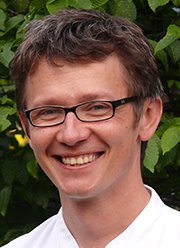 Pawel Fidzinski obtained his MD in 2006 at Charité Universitätsmedizin Berlin, habilitation in 2016 at Charité- Universitätsmedizin Berlin. 25 Publications over 600 citations. 2005 -2008 he was a Postdoc in der Dept. of Cellular Neurophysiology, Charité Universitätsmedizin, Berlin. From 2008 to 2011 he was a Postdoc at Dept. of Physiology & Pathophysiology of Ion Transport, FMP/MDC Berlin. Since 2012 he is attending physician / Postdoc in the Clinic of Neurology, Charité Universitätsmedizin Berlin. He is a neurologist (Dept. Neurology with a chair in experimental neurology, Charité) with a strong research interest in basic and translational neurocience. He is an expert in electrophysiology and EEG.
Pawel Fidzinski obtained his MD in 2006 at Charité Universitätsmedizin Berlin, habilitation in 2016 at Charité- Universitätsmedizin Berlin. 25 Publications over 600 citations. 2005 -2008 he was a Postdoc in der Dept. of Cellular Neurophysiology, Charité Universitätsmedizin, Berlin. From 2008 to 2011 he was a Postdoc at Dept. of Physiology & Pathophysiology of Ion Transport, FMP/MDC Berlin. Since 2012 he is attending physician / Postdoc in the Clinic of Neurology, Charité Universitätsmedizin Berlin. He is a neurologist (Dept. Neurology with a chair in experimental neurology, Charité) with a strong research interest in basic and translational neurocience. He is an expert in electrophysiology and EEG.
Lecture title: Experimental and Clinical EEG
Electrophysiological recordings of brain activity, also known as electroencephalography or EEG, have been used for almost a century. EEG is a powerful tool to assess both healthy and pathological function of the brain. In my talk, I will explain basic EEG principles followed by an overview of clinical and scientific applications and provide various graphical and video examples.
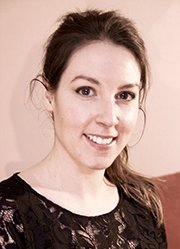 Sarah Genon studied clinical practice in Neuropsychology and Cognitive-Behavioral Psychology at the Université Libre de Bruxelles and the Université de Liège (Belgium). She did a PhD degree in psychology-cognitive neurosciences at the Cyclotron Research Centre (GIGA-CRC In vivo Imaging, Belgium). She was a research fellow at the Institute of Clinical Neuroscience and Medical Psychology of the University of Düsseldorf (Germany). She is currently working at the Institute of Neuroscience and Medicine, Brain and Behavior (INM-7) of the Jülich Research Centre (Germany) on the relationship between human brain organization and cognitive functions.
Sarah Genon studied clinical practice in Neuropsychology and Cognitive-Behavioral Psychology at the Université Libre de Bruxelles and the Université de Liège (Belgium). She did a PhD degree in psychology-cognitive neurosciences at the Cyclotron Research Centre (GIGA-CRC In vivo Imaging, Belgium). She was a research fellow at the Institute of Clinical Neuroscience and Medical Psychology of the University of Düsseldorf (Germany). She is currently working at the Institute of Neuroscience and Medicine, Brain and Behavior (INM-7) of the Jülich Research Centre (Germany) on the relationship between human brain organization and cognitive functions.
Lecture title: Models in neuroscience
Models are present at all levels of neuroscience from the study of brain cell to the study of human behavior. Each discipline has its own conceptualization and epistemological considerations of models. In particular, conceptual and theoretical models (which aim to understand and represent something in the real world) should be distinguished from predictive models (which aim to predict something in the real world). Despite philosophical and practical differences across disciplines, some general important principles for models can be found across disciplines, such as usefulness, applicability, refutability and the trade-off between accuracy and simplicity. Within psychological sciences, many different conceptual models have been proposed. All these models rely on many concepts that do not come from an unique common ontology across fields, despite showing semantic overlap. Following the developments of neuroimaging technics in the last decades, many of these concepts have been mapped to the brain. Thousands of fMRI and PET studies show the neural correlates of various concepts derived from the study of human behavior. An overview of those model-based data reveals a many-to-many mapping on both brain-behavior directions: one single brain region can be related to many behavioral concepts and conversely, one single behavioral concept can be assigned to many brain regions. We will discuss how the aggregation of these behavioral model-based data could be harnessed to switch the perspective in order to generate a new brain-based model and ontology.
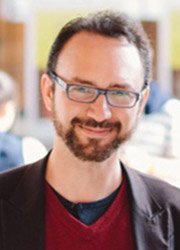 Manuel Guerrero is a sociologist and bioethicist with extensive experience in human rights. He holds a Postgraduate Diploma in Medical Ethics and Research Ethics, and a PhD in Sociology. He works as Research Coordinator at the Department of Neurobiology, Care Sciences and Society, in the Division of Neurogeriatrics at the Karolinska Institutet, Sweden. He is Visiting researcher in neuroethics at the Centre for Research Ethics & Bioethics (CRB), Uppsala University, Sweden, and Assistant Professor in bioethics at the Department of Bioethics and Medical Humanities in the Faculty of Medicine, University of Chile. He is part of the Neuroethics and Philosophy team of the Human Brain Project and is task leader for the Ethics Rapporteur Programme, located in the Ethics Management work package of the Ethics and Society subproject.
Manuel Guerrero is a sociologist and bioethicist with extensive experience in human rights. He holds a Postgraduate Diploma in Medical Ethics and Research Ethics, and a PhD in Sociology. He works as Research Coordinator at the Department of Neurobiology, Care Sciences and Society, in the Division of Neurogeriatrics at the Karolinska Institutet, Sweden. He is Visiting researcher in neuroethics at the Centre for Research Ethics & Bioethics (CRB), Uppsala University, Sweden, and Assistant Professor in bioethics at the Department of Bioethics and Medical Humanities in the Faculty of Medicine, University of Chile. He is part of the Neuroethics and Philosophy team of the Human Brain Project and is task leader for the Ethics Rapporteur Programme, located in the Ethics Management work package of the Ethics and Society subproject.
Lecture title: Data use and ethical awareness in the Human Brain Project
The Human Brain Project (HBP) aims to empower brain research toward understanding the human brain and its diseases to advance brain medicine and computing technology. For that purpose, the HBP brings together neuroscientists, computer and robotics experts to build a unique Information and Communications Technology (ICT)-based infrastructure for collaborative brain research. The HBP helps researchers to access and share collections of brain data from different species allowing accelerating the understanding of the brain through modelling and simulation in computers and robots. Within the framework of Responsible Research and Innovation (RRI), the HBP carries out ethics management, foresight and philosophy work as well as public engagement. This talk will share a high-level overview of the ethical issues related to data use in such a big, complex and multi-national research initiative as the HBP.
 Larissa Kraus is PhD student within the International Graduate Program Medical Neurosciences, Charité. She studies the action of drugs on induced seizures in electrophysiological measurements on human hippocampal slices obatind from epilepsy surgery. Main topic is RNA editing.
Larissa Kraus is PhD student within the International Graduate Program Medical Neurosciences, Charité. She studies the action of drugs on induced seizures in electrophysiological measurements on human hippocampal slices obatind from epilepsy surgery. Main topic is RNA editing.
Lecture title: Electrophysiology
Understanding the nervous system has been a challenge for scientists since the ancient Egypt. The development of the microscope and histological methods led to discoveries by Golgi and Cajal that have introduced a new understanding of the nervous system on a single cell level. Single cell recordings (Patch-Clamp) developed by Bert Sakmann and Erwin Neher in the 1980s or the discoveries about the molecular mechanisms of memories by Eric Kandel in the 1960s helped us further understand how cells code and transfer information. Today, with the help of electrophysiological methods we are able to study the electrical properties and activity not only of the brain, but also of the heart, eyes, skin or muscles. Even plant cells, though very different from nerve cells, can show electrical responses to environmental cues. By combining molecular techniques with optics, we can even manipulate electrophysiological properties of a cell and visualize activity of neurons on a single cell level in a time dependent manner. The talk will be about long established electrophysiological methods and how they are used to study electrical properties of different cell types and networks. We will talk about methods like EEG, EKG and field potential recordings, but also more advanced methods like Patch-Clamp or paired recordings of single cells. I will give an introduction into the application of electrophysiology in therapy and how the knowledge gained by electrophysiological studies can be translated to other scientific fields.
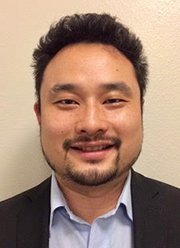 Jeffrey Liu obtained his PhD in Biophysics from The Scripps Research Institute in La Jolla in 2013. Before, he studied molecular and cell biology at Berkeley, California. Since 2013 he holds a position as PostDoc at the Max Planck Institute of Biochemistry in Martinsried (Planegg). In 2014 he was granted an EMBO long-term fellowship. His field of research focuses on systems biology, proteomics, GPCR signal transduction, protein dynamics with a special interest in phosphoproteomics of opioid systems and the neurobiology of opioid systems.
Jeffrey Liu obtained his PhD in Biophysics from The Scripps Research Institute in La Jolla in 2013. Before, he studied molecular and cell biology at Berkeley, California. Since 2013 he holds a position as PostDoc at the Max Planck Institute of Biochemistry in Martinsried (Planegg). In 2014 he was granted an EMBO long-term fellowship. His field of research focuses on systems biology, proteomics, GPCR signal transduction, protein dynamics with a special interest in phosphoproteomics of opioid systems and the neurobiology of opioid systems.
Lecture title: Omics in neuropharmacology
Studies of neuroreceptor signaling are the basis of pharmacology of the central nervous system. This includes psychoactive compounds, e.g. LSD, and drugs of abuse, e.g. the opioids, cocaine, and many others. The recent developments in the -omic technology, such as mass spectrometry-based phosphoproteomics enable an unbiased global survey of signal transductions in the brain. I will use the kappa opioid receptor (KOR) system as an example to illustrate this new direction. KOR in the limbic system mediates analgesic effects but also induces dysphoria and hallucination, hampering its therapeutic potential. Through a comprehensive survey of KOR-mediated downstream phosphorylation changes in the mouse brain, we were able to identify and experimentally verify that the mTOR signaling system is responsible for the adversive properties of KOR signaling. Thus, we are able to demonstrate that this systems level approach is crucial in generating novel information and hypotheses on neuroreceptor signaling.
 Maja Amedjkouh Puchades is a senior researcher in Anatomy at the Institute of Basic Medical Sciences, University of Oslo, Norway. She received her PhD in 2003, from Gothenburg University, Sweden, with a thesis focused on developing proteomic methods for studying biomarkers of Alzheimer’s disease. Main research interest is in neurodegenerative related diseases (Alzheimer, Parkinson and Huntington), studying energy metabolism perturbations, vascular disturbance, protein aggregation and the involvement of inflammatory signals in the Brain. The methodologies used range from classical immunohistochemistry, electrophoresis, mass spectrometry, electron and confocal microscopy, stereology to more recent techniques like whole brain STP Tomography, high resolution scanning and neuroinformatic tools for whole brain analysis Use of rodent digital atlasing and development of analytical pipelines for brain protein characterization.
Maja Amedjkouh Puchades is a senior researcher in Anatomy at the Institute of Basic Medical Sciences, University of Oslo, Norway. She received her PhD in 2003, from Gothenburg University, Sweden, with a thesis focused on developing proteomic methods for studying biomarkers of Alzheimer’s disease. Main research interest is in neurodegenerative related diseases (Alzheimer, Parkinson and Huntington), studying energy metabolism perturbations, vascular disturbance, protein aggregation and the involvement of inflammatory signals in the Brain. The methodologies used range from classical immunohistochemistry, electrophoresis, mass spectrometry, electron and confocal microscopy, stereology to more recent techniques like whole brain STP Tomography, high resolution scanning and neuroinformatic tools for whole brain analysis Use of rodent digital atlasing and development of analytical pipelines for brain protein characterization.
Lecture title: Histological methods and microscopic techniques in neuroscience
This session will focus on the generation of data by histological methods with a special focus on the integration of data into the HBP brain atlas project.
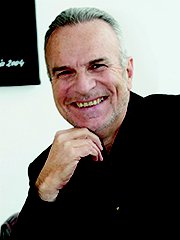 Alois Saria started his research career investigating functions of neuropeptides in the autonomic and central nervous system and then moved to work on neuropeptides in the central nervous system and mechanism of action of psychoactive drugs and narcotics. More recently his research focused on systems neurobiology, particularly reward systems, and pharmacokinetic and -dynamic aspects of antidepressants and antipsychotics relevant for therapeutic drug monitoring in psychiatry. Techniques applied include behavioural animal models in psychiatry, most recently for addictive behaviour, immunohistochemistry, in-situ hybridization, in-vivo microdialysis, cell and tissue culture, quantitative determination of signaling substances with immunoassays and LC-tandem-mass spectrometry. In the current SPIN projects multielectrode-array recordings and optogenetic methods are in the process of being established.
Alois Saria started his research career investigating functions of neuropeptides in the autonomic and central nervous system and then moved to work on neuropeptides in the central nervous system and mechanism of action of psychoactive drugs and narcotics. More recently his research focused on systems neurobiology, particularly reward systems, and pharmacokinetic and -dynamic aspects of antidepressants and antipsychotics relevant for therapeutic drug monitoring in psychiatry. Techniques applied include behavioural animal models in psychiatry, most recently for addictive behaviour, immunohistochemistry, in-situ hybridization, in-vivo microdialysis, cell and tissue culture, quantitative determination of signaling substances with immunoassays and LC-tandem-mass spectrometry. In the current SPIN projects multielectrode-array recordings and optogenetic methods are in the process of being established.
Lecture title: The Human Brain Project at the half-way point
The Human Brain Project is one of the Flagship Projects funded by the European Union for a period of ten years. The project started in October 2013 and has now reached the half-way point. The core project currently involves 131 partners from 19 European countries and 7 partnering projects. The mission of the project is to explore the multi-level complexity of the brain in space and time and to transfer the acquired knowledge to brain-derived applications in medicine, computing and technology. At the moment, 6 ICT-platforms have been established where consortium members, in collaboration with other scientists, carry out experiments that already lead to a number of success stories with impact on creating more detailed digital brain atlases, treatment of brain diseases, development of electronic devices or building a brain-like, so-called “neuromorphic” computer architecture. For the remaining funding periods the focus will be on building a sustainable infrastructure which can be accessed by researchers from anywhere for novel experimental approaches to brain research using most advanced high-performance and brain-inspired computer technologies.
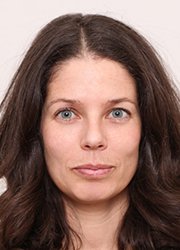 Obtained PhD in 2005 from the Leopold-Franzens-University Innsbruck. Simone Sartori spent a year at Oxford University (2000-2001). From 2005 to 2009 she was a PostDoc at the Dept. Pharmacology and Toxicology of Leopold-Franzens-University Innsbruck. Since 2009 she is University Assistant there. Here research focuses on anxiety and depression and utilizes animal behavioural studies.
Obtained PhD in 2005 from the Leopold-Franzens-University Innsbruck. Simone Sartori spent a year at Oxford University (2000-2001). From 2005 to 2009 she was a PostDoc at the Dept. Pharmacology and Toxicology of Leopold-Franzens-University Innsbruck. Since 2009 she is University Assistant there. Here research focuses on anxiety and depression and utilizes animal behavioural studies.
Lecture title: Behavioural testing
Behaviour is the observable manifestation of brain function in response to environmental, pharmacological and genetic manipulations and may be correlated with neuronal, electrical and chemical measures. Behavioural analysis offers, thus, an indispensable pool of tests which can be applied in modern neurosciences and drug development in order to understand the neuronal mechanisms underlying physiology, disease and drug actions. Here, we will first address general principles that arise in behavioural testing. We will discuss how sensorimotor, emotional, cognitive and motivational aspects of behaviour can be studied with validity and high quality. By addressing a specific neuroscientific rationale, we will consider the behavioural screening of a mouse model as central method. We will demonstrate in detail how to elaborate the respective experimental design, select the behavioural tests, reduce bias and confounding factors, analyse and interpret the data. Finally, we will discuss whether and how these behavioural readouts may translate into humans.
 Christoph Schwarzer is a microbiologist and biochemist by training. After his PhD he switched to neuropharmacology, combining molecular biology with animal behavior to investigate epilepsy. At present he is heading a research group at the Dept. Pharmacology at the Medical University of Innsbruck, which is part of the doctoral college SPIN (signal processing in neurons), an excellence initiative funded by the Austrian Science Fund. Their main research interest focuses on the functional implications of the endogenous opioid system in physiology and pathophysiology of the brain. Investigating both, the influence of opioids on behavior as well as the functional implication of opioids in epilepsy is crucial to develop novel, efficient, yet save therapies. At present they follow two main lines, one refers to the development of novel classes of drugs with functional selectivity (biased drugs), the other to the development of gene therapy for epilepsy.
Christoph Schwarzer is a microbiologist and biochemist by training. After his PhD he switched to neuropharmacology, combining molecular biology with animal behavior to investigate epilepsy. At present he is heading a research group at the Dept. Pharmacology at the Medical University of Innsbruck, which is part of the doctoral college SPIN (signal processing in neurons), an excellence initiative funded by the Austrian Science Fund. Their main research interest focuses on the functional implications of the endogenous opioid system in physiology and pathophysiology of the brain. Investigating both, the influence of opioids on behavior as well as the functional implication of opioids in epilepsy is crucial to develop novel, efficient, yet save therapies. At present they follow two main lines, one refers to the development of novel classes of drugs with functional selectivity (biased drugs), the other to the development of gene therapy for epilepsy.
Lecture title: Basics of neurobiology I & II
These two lectures will deal with basic structures of a cell/neuron, basic priciples of synaptic transmission, structure and function of the synapse, transmitter synthesis, neuronal networks and their dynamics.
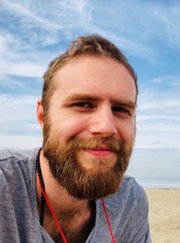 Luca Zangrandi got his PhD in Neuroscience from the excellence program SPIN in Innsbruck in 2015. After a Post-Doc. stay in Chicago (Northwestern University) he came back to Innsbruck in 2018. Besides a number of decent publications he is also co-author on a SCIENCE paper (2018).
Luca Zangrandi got his PhD in Neuroscience from the excellence program SPIN in Innsbruck in 2015. After a Post-Doc. stay in Chicago (Northwestern University) he came back to Innsbruck in 2018. Besides a number of decent publications he is also co-author on a SCIENCE paper (2018).
Lecture title: In vitro methods
This part will focus on cell culture methods and biochemical assays applied to study receptors.
SCIENTIFIC CHAIR
Christoph Schwarzer | MUI
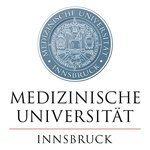
ORGANISER
Sylvia Aßlaber | MUI
Lisa-Marie Leichter | MUI
This face-to-face workshop is based on the content of the HBP Curriculum online lectures.
ABOUT THE VENUE
MEDICAL UNIVERSITY INNSBRUCK
Medizinzentrum Anichstraße
6020 Innsbruck
Austria
The Medical University of Innsbruck is a young research centre with a long tradition: It was one of the first four faculties (Philosophy 1669, Faculty of Law 1670, Faculty of Theology 1670 and Faculty of Medicine 1674) of the University of Innsbruck and has been an important flagship for the university throughout its 350-year history.
In the heart of Tyrol, Austria and consequently in the heart of the Alps, the Medical University of Innsbruck provides the best conditions for successful research, studies and teaching at an attractive location. It is the most important medical research and training facility in western Austria


